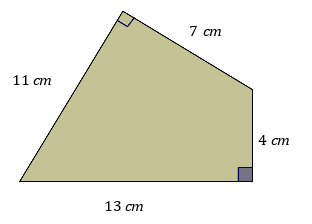Area Composite Shapes
We have already had a look at combining 2D shapes together and finding the area of composite shapes. But since then we have learnt about the areas of a whole lot more shapes.
Let's just look at a summary of areas of 2D shapes we have looked at so far with our shape robot:

Strategies
The key skills you need to remember when thinking about composite shapes are to consider
- can the shape be considered as a larger easier shape with smaller bits missing
- can the shape be considered the sum of a number of smaller shapes
$$Area of a Rectangle =length ×width
$$A=L×W
$$Area of a Square =Side ×Side
$$A=S×S
$$area of a triangle =12×base ×height
$$A=12bh
$$Area of a Parallelogram =Base ×Height
$$A=b×h
$$Area of a Trapezium=12×(Base 1 +Base 2 )×Height
$$A=12×(a+b)×h
$$Area of a Kite=12×diagonal 1×diagonal 2
$$A=12×x×y
$$Area of a Rhombus =12×diagonal 1×diagonal 2
$$A=12×x×y
$$Area of a circle
$$A=πr2
$$Area of a sector
$$A=angle of sector360×πr2
Worked Examples
QUESTION 1
Find the total area of the figure shown.

QUESTION 2
Find the total area of the figure shown.
